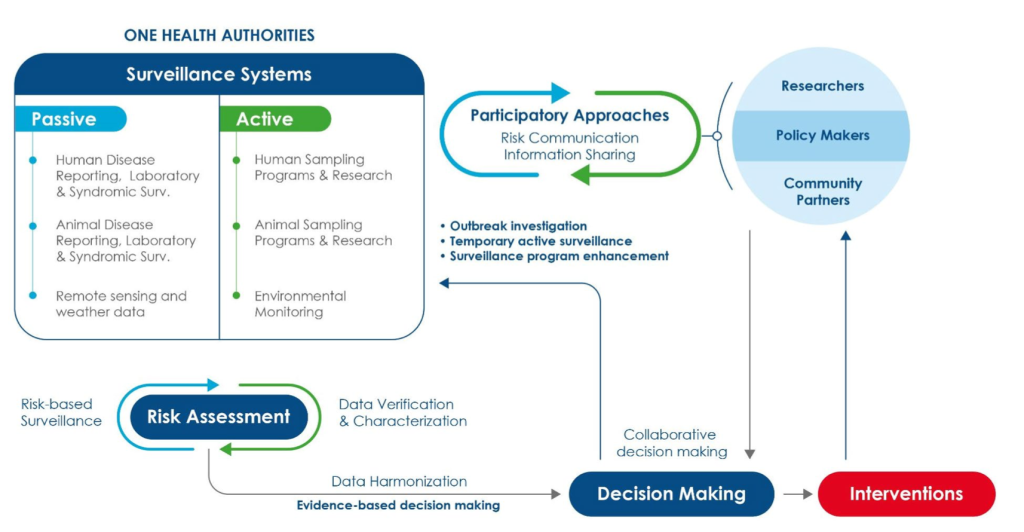

Conclusions
- Methods developed for risk-based approaches can help prioritize resources and target high priority areas and populations.
- Coordination of surveillance activities using human health, animal health, and environmental health bolsters pandemic preparedness.
- Repurposing and/or maintaining existing diagnostic capacity and broad virologic assays can be employed to detect emerging zoonotic threats.
- Engagement of experienced stakeholders can identify how people are in direct or indirect contact with animals and animal products.
- Interoperability of One Health data will be essential to increase preparedness.
How to Design and Conduct Risk-Based Surveillance at the Human-Animal Interface
The “Tripartite” collaboration between WHO, FAO, and WOAH has emphasized the imperative for coordinated One Health surveillance systems to combat infectious diseases at the human-animal-environment interface. While traditional risk-based approaches are valuable, the incorporation of One Health principles enhances the effectiveness of surveillance and intervention strategies. This module emphasizes the engagement of communities in participatory surveillance approaches fosters improved reporting quality, accelerates detection, and enhances response efforts. This module also described the initiatives such as mobile-based projects and community-led surveillance networks demonstrate the potential for community involvement in enhancing disease surveillance.
Contents
- One Health Surveillance at the Human-Animal Interface
- Syndromic surveillance
- Laboratory surveillance
- Seroepidemiological studies
- Environmental surveillance
- Event-based surveillance
- Risk-based approaches

Project Management
The project, Countering Zoonotic Spillover of High Consequence Pathogens (HCP),is conducted in collaboration with the US National Academies of Sciences, Engineering, and Medicine (NASEM).
The project is locally managed by Project Officer, Hazel Yean Ru Ann, who is co-located with the INGSA-Asia office at Sunway University, Malaysia.
If you or your organisation are involved with the live animal supply chain in Asia, or have expertise in zoonosis, we encourage you to get in touch with the Project Officer and help us to operationalise and disseminate best practice in the field.

